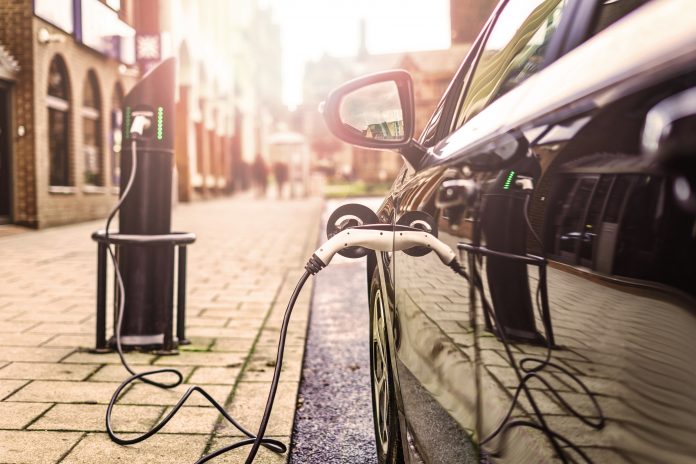Stuart Irvine, senior director of planning at Turley, discusses how the government’s EV mandate in new development could work in practice
At the end of 2021, the government unveiled its plans to create a new law mandating the inclusion of EV charge points in all new homes. This new measure, which will come into effect in 2022, represents a crucial step in the UK’s commitment to the net-zero agenda post COP26. The move was praised as a means of futureproofing new homes and ensuring they could support drivers as the rollout of EV takes effect.
The futureproofing of UK homes undoubtedly needs to happen, without this it is highly unlikely the UK will be in a position to meet its carbon target and keep pace with the broader push for net-zero.
But, considering the consequences of failure, the government’s home-centric approach to EV charging point deployment certainty lays a significant burden squarely on the shoulders of housing developers. Is the government truly correct in thinking that housing alone should bear the brunt of a nationally-significant infrastructure challenge like EV charge points?
Calls for accessible public infrastructure to deliver the transition to electric vehicles
Despite the recent additional £500m investment announced by government into public charge point infrastructure, industry players including Vauxhall and the BVRLA have said that the government’s strategy for public charge points could go significantly further. They have called for public infrastructure that is highly accessible by all drivers to help foster the widespread uptake of EVs and deliver the UK’s much needed transition to EVs from 2030.
However, the success of creating an effective EV charging network heavily relies on the provision of new homes up and down the country. Crucially, new homes also need to be in the places where EV charge points are needed the most. And this is where the challenge arises.
London currently has 102 chargers for every 100,000 people, whereas Greater Manchester only has 17 per 100,000 people according to data from ZapMap. Across the country as a whole, there are fewer than seven for every 100,000 people in the UK.
If most of the country’s charge points are in city centres, where housing development is far more active, then filling in the gaps won’t be achieved through new housing development alone. Delivery in rural areas faces substantial constraints too – from NIMBYism to land availability outside of the Green Belt.
Ultimately, it’s hard to guarantee an equitable delivery of homes in rural areas across the country. Of course some rural areas will see new developments come forward where this policy will help provide more charge points. But, it will still create pockets where new charge points are thin on the ground.
The new mandate could create challenges in getting housing schemes off the ground quickly
At the same time, the onus on housebuilders to build this as a cost within housebuilding models could create challenges in getting these schemes off the ground quickly considering the nation continues to be trapped in the grips of a housing crisis. Viability challenges will be exacerbated and the delivery of infrastructure will create a further burden for difficult to develop sites in particular.
Meanwhile, in city centres – which let’s be clear, still don’t have enough charge points – new housebuilding tends to be high-volume schemes including build-to-rent, co-living and PBSA. These types of homes don’t have driveways, and often don’t include a car-parking space for every resident. The mandate is set to include a requirement for an EV charge point for one in five car parking spaces, for developments with more than 10 parking spaces. But this is unlikely to be enough to create an infrastructure that supports every car driver in city centres.
The other challenge is in retrofit where any major works to existing residential stock needs to include provision of charge points, which will add to the cost of maintaining buildings, particularly where leaseholders may need to bear the brunt of some cost.
In urban areas, housing layouts and designs will need adjustment. Here, competing demands on what is needed and what can be accommodated as part of these current plans will require innovative approaches.
To ease the burden, the entire property industry needs to work with the government to identify how we can create a better charging infrastructure that doesn’t have as significant an impact on delivery on other markets like housing.
Where we need to be thinking is about how planning policy can better allow for on-street EV charging within mixed-use schemes, or using vacant assets in urban centres to create EV charging hubs that can be shared between new developments, so that housebuilders are just one source meeting the needs of existing and future occupiers.
Focusing on housing as a means to deliver the necessary EV charging network will, at best, only meet a narrow part of the need. The real challenge will be to deliver EV charge points in areas where new development cannot provide the answer. This would suggest a mindset more akin to that which has underpinned the roll out of broadband and telecommunications technology. This will require an innovative approach and will undoubtedly focus on redefining forecourt provision together with new community-based provision.
In the meantime, we would encourage the government to refocus its approach to places less reliant upon the house building industry and give greater regard to the delivery of new infrastructure in accessible locations both urban and rural.
Stuart Irvine
Senior director of planning
Turley

















